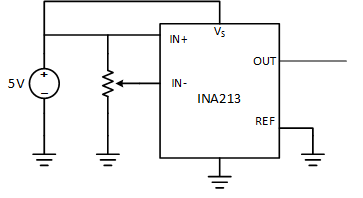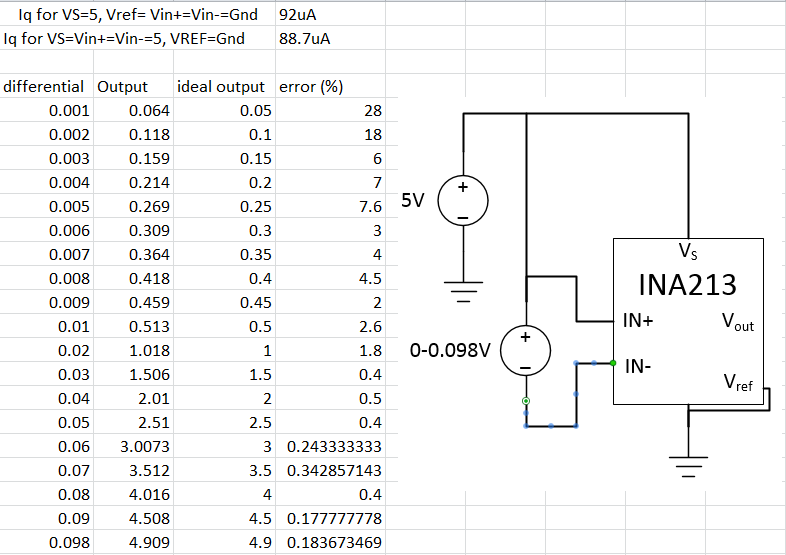Hello,
I am trying to use the INA213 to monitor current coming in from the power supply. As a preliminary step I am testing the device alone to find its capabilities. Below are my configurations. With this setup, I am increasing and decreasing the load and it seems that the output pin on the device is maxed out around 1V. I am looking for the understand why it will not output more than that. Ideally I would like it to span the VREF of the microchip which is 3.3 V.
Current sense Amplifier:
Reference: Grounded
V+: 5V
IN+: 5V
IN-: Load Potentiometer



